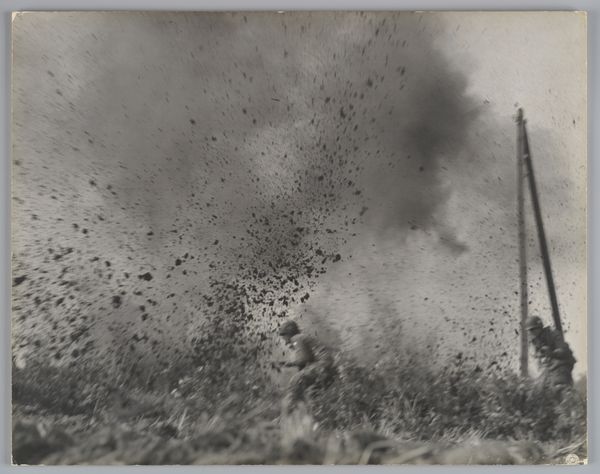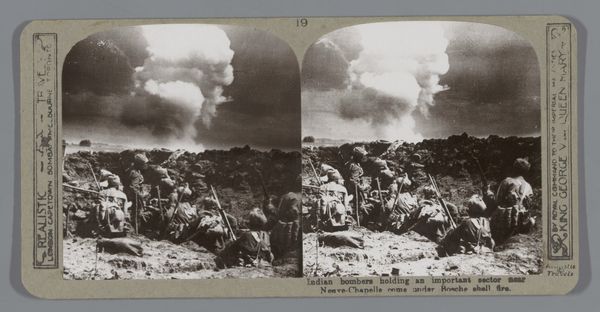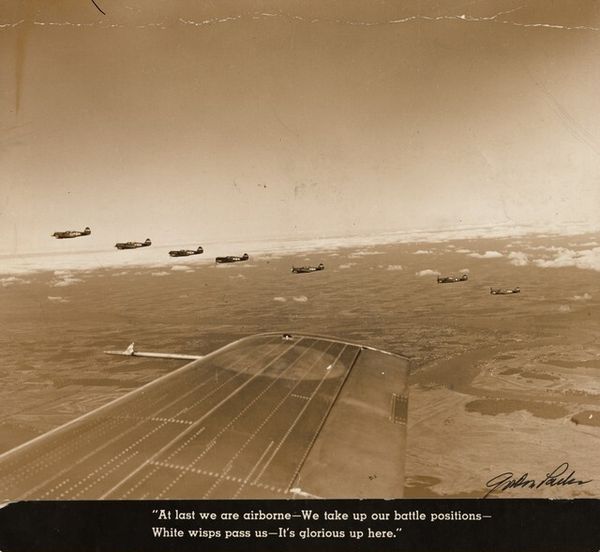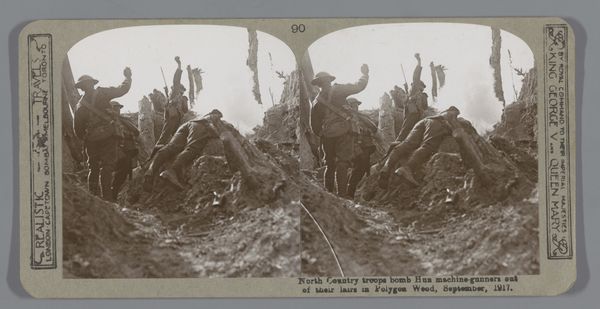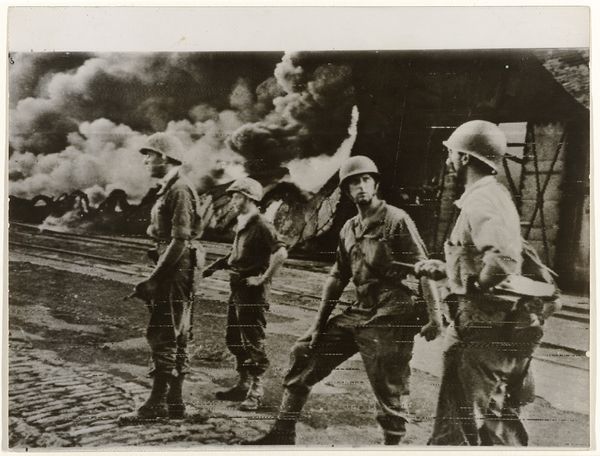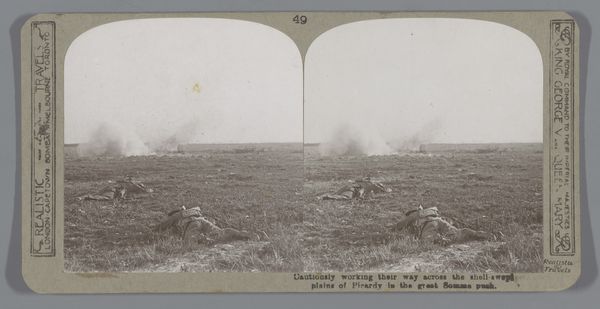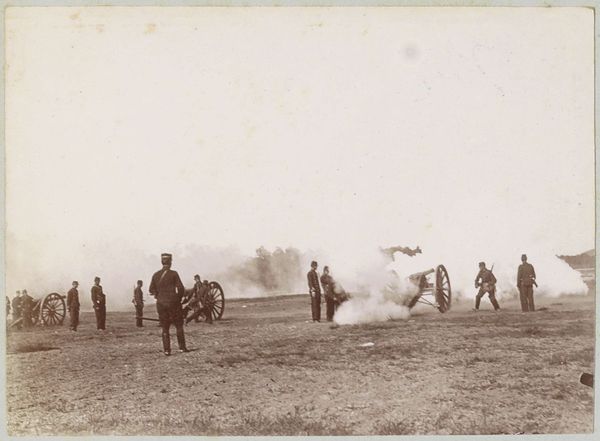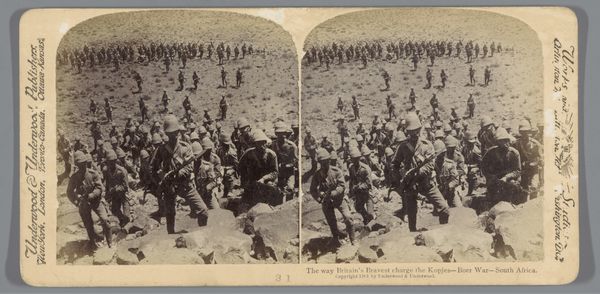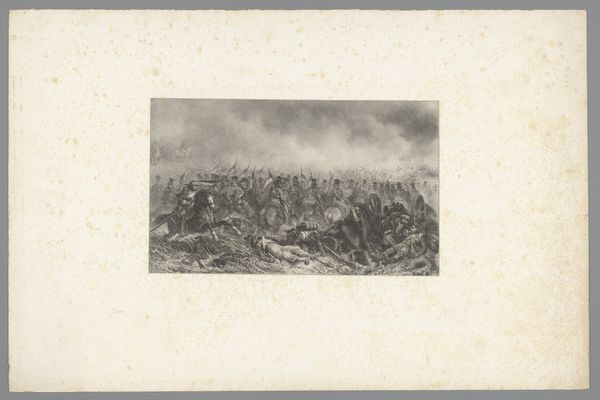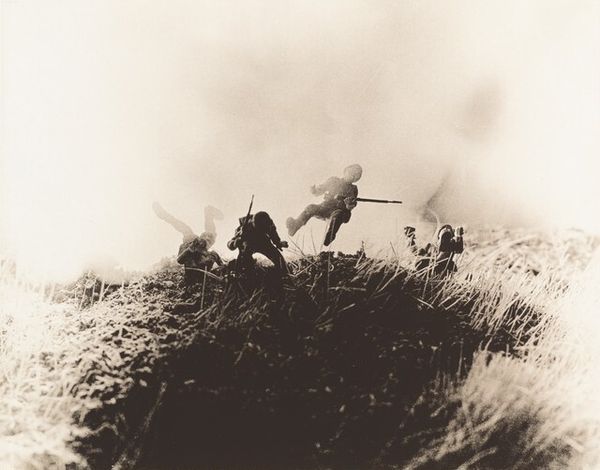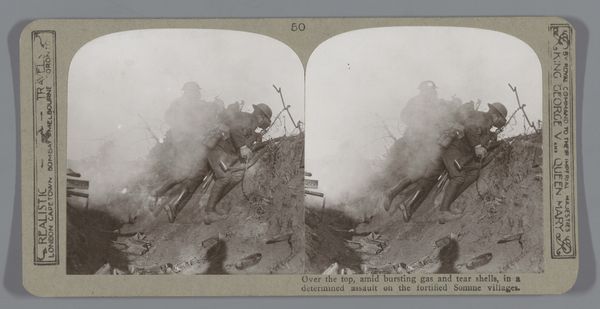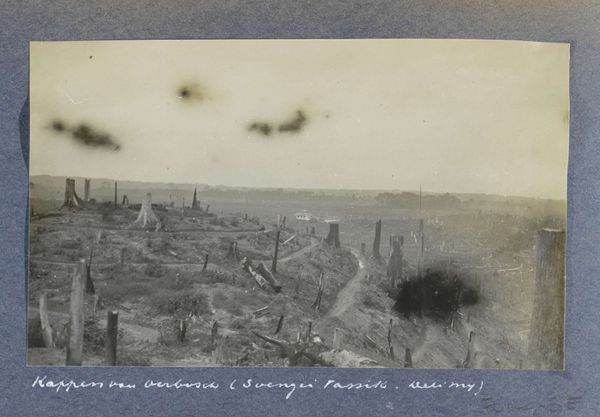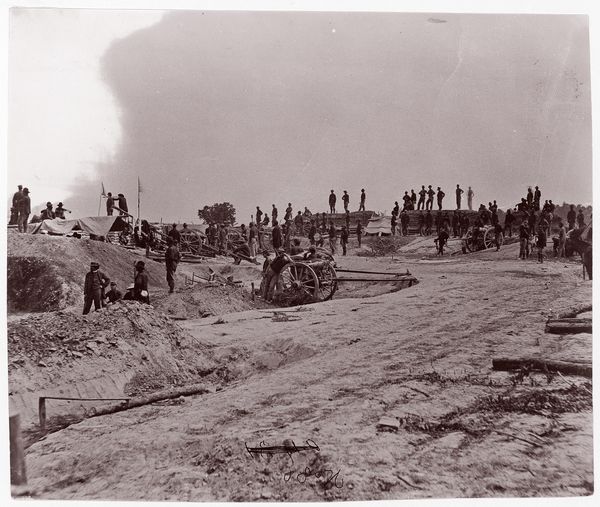
print, photography, gelatin-silver-print
# print
#
war
#
landscape
#
photography
#
gelatin-silver-print
#
history-painting
#
modernism
Copyright: Frank Hurley,Fair Use
Editor: This gelatin-silver print, “Episode After Battle of Zonnebeke” by Frank Hurley, really captures the chaos of war. The sky is filled with smoke and airplanes while soldiers are crouched in trenches below. What do you make of this depiction? Curator: The use of gelatin-silver as a printing process is interesting here. Hurley's manipulation of photographic materials allows for the intense contrast, and creates an almost hyper-realistic view of war, while being, actually, manipulated and staged! How does this manipulation alter our understanding of the documented reality of war, and its effect on the troops pictured, its consumption as 'truth'? Editor: It definitely feels more constructed now that you point that out. Were gelatin-silver prints common in war photography at the time? Curator: Gelatin-silver prints became dominant precisely due to their reproducibility and stability – perfect for mass dissemination of images during wartime. So the medium itself becomes an instrument of war propaganda. Also, let's think about the labour: who produced these images and how did their social position affect their perspective? How are class and labor issues intertwined with the experience and recording of war? Editor: That's a great point. The means of production really shape the message. It makes me consider the role of photography in shaping public opinion during wartime, especially when images are mediated through a particular material process and distributed en masse. Curator: Exactly! The ‘truth’ of photography becomes entangled with its industrial production, its distribution, and ultimately, its consumption. Editor: So it's not just about the event depicted but about understanding the broader systems at play to produce and circulate these representations. I'll never look at a historical photograph the same way again! Curator: And that is exactly the point. Focusing on these considerations provides an interesting critical lens for evaluating Hurley's iconic work.
Comments
No comments
Be the first to comment and join the conversation on the ultimate creative platform.
